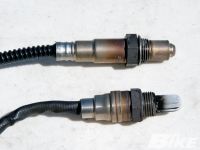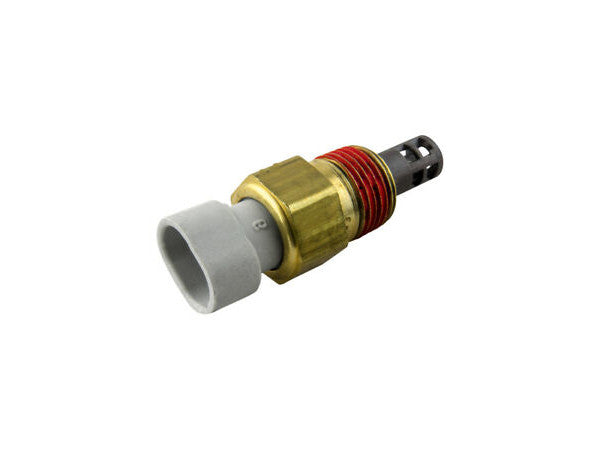Written By: Enginebasics.com

One the most important aspects of the combustion motor is the air to fuel ratio in the cylinder. Like all things that explode, having the proper amount of combustible fuel to the amount of air to sustain the burn is important. Having lots of air but no fuel will cause the combustion to burn very rapidly and hot, while having lots of fuel, but no air will cause the mixture to burn very cool and slowly. Having an overly gross amount of either fuel or air will cause the combustion to not even occur at all.
What is Lambda?
Lambda is scale that relates the air to fuel ratio of ANY fuel. 1.0 is stoic for every fuel. (the chemically perfect ratio of air to fuel for a complete burn). However, stoic is different for every fuel. Some fuels may need 14.7 lbs of air some may need 6 lbs of air for a complete burn. Lambda 1.0 is always the perfect ratio for the fuel in use.
Some tuners argue that it is better to read air to fuel ratio's in lambda since it will be accurate with any fuel. To be fair though, most aftermarket gauges will read lambda and convert that number to an a/f ratio for gasoline. If the user then knows the stoic, lean, and rich ratio's for gasoline, he can apply those numbers to any fuel used and it won't matter.
What I mean is that if you are running 14.7 (stoic) on a gasoline A/F gauge and you then convert to alcohol ( or E85 ), 14.7 will still be stoic on the gasoline gauge. This is because the gauge is going to read a stoic lambda reading of 1.0 for any fuel, and the gauge is going to output that number as 14.7 on you're A/F gauge even though we know the true ratio for alcohol is 7.1-9.1.
Many times I have then seen people try and richen the cars tuning map to get down to that A/F value, not realizing that they are already at a stoic burn if the gauge set up for gasoline reads 14.7.
Narrow Band vs Wide Band o2 Sensors

A narrow band o2 sensor is an oxygen sensor that is only calibrated to know three things. Rich, stoic, and lean. What I mean by this is that it only has a narrow window that it see's the air fuel mixture through. The sensor can tell the computer when it's stoic. If it's not stoic, it can tell the ECU that it's either Rich, or Lean, but that's it. It doesn't really output any particular value other than that. How rich the car is the sensor has NO IDEA about. Same with how lean the car is. All it does know is that it's not stoic. The ecu with a narrow band O2 sensor, when in closed loop mode, will then lean on the fuel map if it is receiving a rich signal from the O2 sensor till its stoic. The opposite would be true if the sensor was telling the ECU that it was currently running lean, it would richen the fuel map till the O2 sensor was reading stoic.
A wide band O2 sensor is much more sophisticated than a narrow band sensor, and can be relied upon to be used as a tuning tool. Wide band sensors not only are a lot faster acting in the reading, but can tell you the exact a/f ratio that the motor is currently at. So instead of just telling the ECU that the motor is running rich, it will read a voltage that correlates to an actual value, like 11.2. One thing to remember with a wide band sensor is that it has a heating element that needs to be heated up before the sensor will be accurate in its readings. This usually only takes a few seconds, but just remember that for those first few seconds the gauge is not useful. Wide band sensors give the ECU the ability to tune exact A/F value's to a tenth of a decimal instead of just enriching and leaning the mixture till a stoic value is seen.
What is Stoic, Rich, and Lean?
Stoic, rich, and lean are terms that we use to describe the burn ratio of fuel to air in the combustion chamber. The perfect ratio for good combustion of every fuel is called stoic. A stoic value will always give the motor a good clean burn while taking gas mileage into account as well.
Rich refers to conditions in the air fuel value were there is more fuel present than is ideal to the air content. Rich conditions will cause the burn to use more fuel, but can also offer more power at the same time.
Lean refers to conditions in the air fuel value were there is more air than fuel. This causes the combustion to occur rapidly and burn very hot. While this is great for gas mileage, often the vehicle will be down on power and become dangerous to the motors internals.





Leave a comment
This site is protected by hCaptcha and the hCaptcha Privacy Policy and Terms of Service apply.